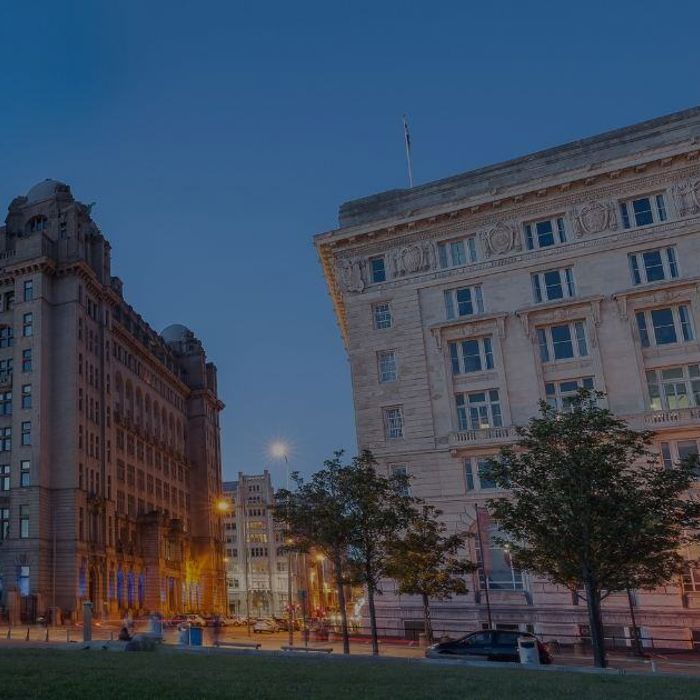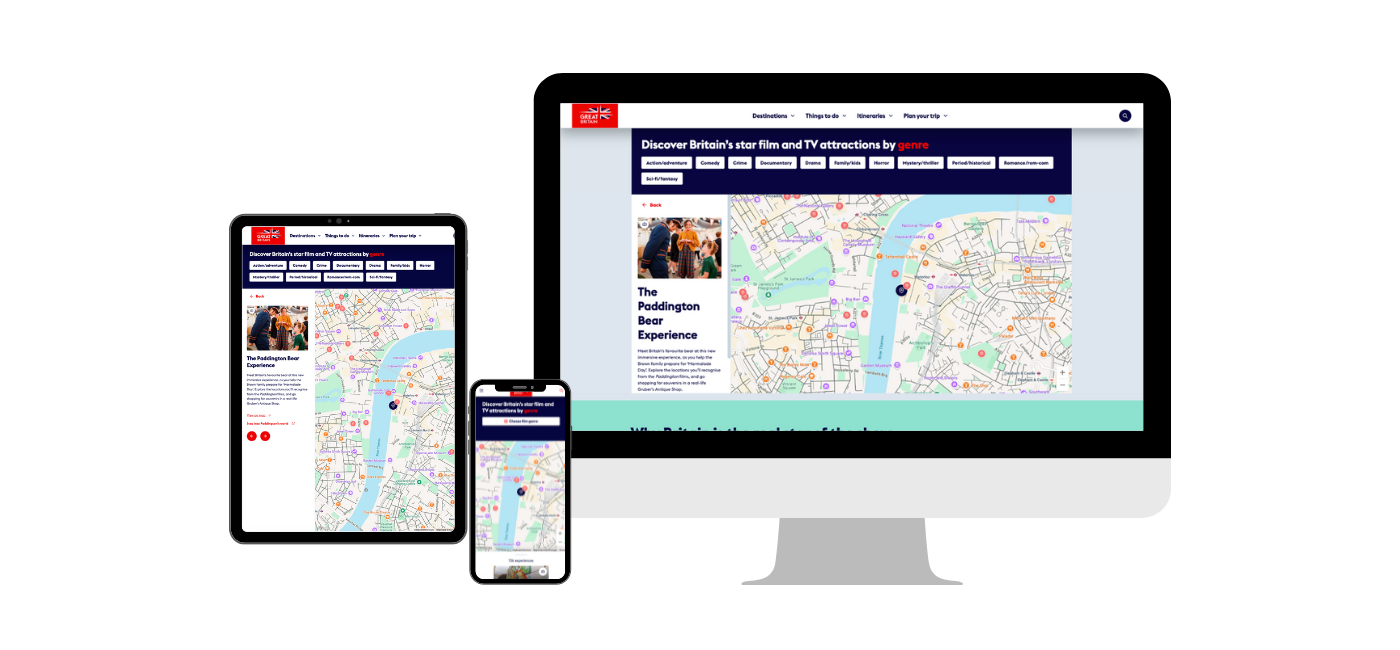
VisitBritain drives web engagement with ‘Starring GREAT Britain’ campaign
Client overview
VisitBritain, the UK's national tourism agency, drives international tourism by promoting Britain's diverse attractions and supporting the local tourism industry.
As a trusted long-term digital partner, CTI Digital has been critical in VisitBritain's digital transformation and content strategy initiatives.
As a trusted long-term digital partner, CTI Digital has been critical in VisitBritain's digital transformation and content strategy initiatives.
The challenge
VisitBritain partnered with us to support their ambitious global marketing campaign 'Starring GREAT Britain', designed to showcase iconic British film locations.
Launched in January 2025, this ambitious project called for an engaging landing page where film enthusiasts could discover Britain through the lens of their favourite movies. At its heart lies an interactive map interface that helps visitors plan their film-inspired journeys across Britain.
Our team was tasked with bringing this vision to life, creating a dynamic web experience that positions Britain as the true star of countless iconic films.
Launched in January 2025, this ambitious project called for an engaging landing page where film enthusiasts could discover Britain through the lens of their favourite movies. At its heart lies an interactive map interface that helps visitors plan their film-inspired journeys across Britain.
Our team was tasked with bringing this vision to life, creating a dynamic web experience that positions Britain as the true star of countless iconic films.

"I always really appreciate how open CTI Digital are to working so closely with the VisitBritain team and our other partners. It feels really good to see all of the months of planning finally come to fruition and the work out there in the world!”— Marie Orpen Head of Digital
The approach
To deliver an enhanced user experience for VisitBritain’s website, we focused on key technical upgrades and innovative solutions:
-
Improved Video Player:
Replaced third-party video players with a bespoke VideoJS solution for better performance and accessibility, while removing the need for third-party cookies. -
Content Drafting & Taxonomy Upgrades:
To support campaign preparation, we implemented a minor Drupal platform upgrade, enabling draft content creation and making it easier to manage, review, and adapt for different countries. -
Itinerary Migration:
We adapted VisitEngland’s itinerary tools for VisitBritain, improving how content is organised and tailored for international audiences. -
Tool Identification:
Research was conducted to determine the best tool for displaying data on a map that could also be animated for the promo map and integrate with custom filtering, stylised pop-ups and carousel functionality. -
Interactive Maps:
After determining Google to be the best option, we created two interactive map components: a "Promo Map" for showcasing key content and an "Interactive Map" to help users explore film location content tailored to their interests.
The results
By delivering these solutions, we empowered VisitBritain to showcase their content in a way that really connects with their audience, using easy-to-use, visually engaging tools.
Through strategic implementation and thoughtful design, the new interactive platform enables visitors to explore and plan their film-inspired journeys across Britain with ease. The intuitive interface seamlessly connects iconic filming locations with practical travel information.
The 'Starring GREAT Britain' campaign continues to drive inbound tourism interest across key markets and regions through its multi-channel approach.
The campaign itself has garnered significant media attention and public engagement, anchored by its centrepiece film directed by Academy Award-winner Tom Hooper. VisitBritain is now leveraging this momentum to drive visitor consideration and conversion.
Through strategic implementation and thoughtful design, the new interactive platform enables visitors to explore and plan their film-inspired journeys across Britain with ease. The intuitive interface seamlessly connects iconic filming locations with practical travel information.
The 'Starring GREAT Britain' campaign continues to drive inbound tourism interest across key markets and regions through its multi-channel approach.
The campaign itself has garnered significant media attention and public engagement, anchored by its centrepiece film directed by Academy Award-winner Tom Hooper. VisitBritain is now leveraging this momentum to drive visitor consideration and conversion.

